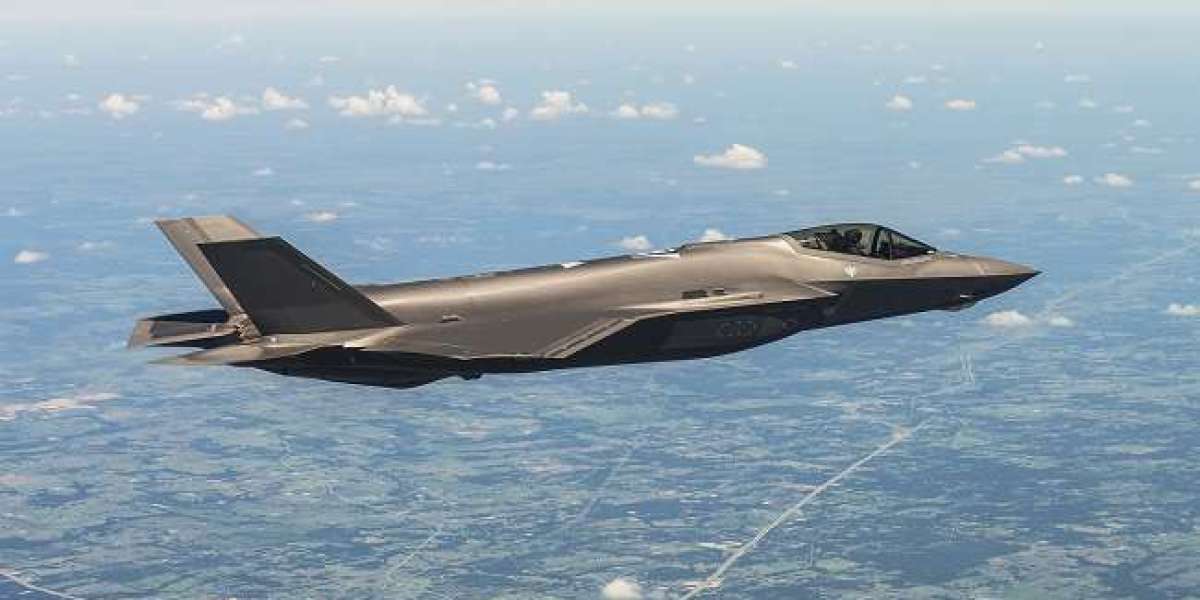According to TechSci Research report, “Global Military Aircraft Avionics Market - Industry Size, Share, Trends, Competition Forecast & Opportunities, 2028”, the Global Military Aircraft Avionics Market stood at USD 36 billion in 2022 and is anticipated to grow with a CAGR of 5.65% in the forecast period, 2024-2028. Several countries throughout the world have increased their defense spending in recent years, which has led to acquisition and development efforts for military aircraft in the industry. The associated avionics market is currently growing as a result of this aspect. Older military aircraft's avionics systems need to be replaced as a result of the development of new and improved avionics. The aircraft is supported by these advanced avionics suites to fulfill the demands of the modern battlefield, including long-range target identification and tracking, stealth, and electronic warfare protection. Therefore, armed forces are developing modernization programs to upgrade the avionics suites in the military aircraft in order to stay ahead of rivals and allies. In addition, a number of nations are creating and acquiring next-generation military aircraft to upgrade and enlarge their fleets.
The global military aircraft avionics market is a dynamic and rapidly evolving sector that plays a pivotal role in modern defense systems. Avionics, a portmanteau of aviation and electronics, encompasses a wide range of electronic systems and devices integrated into military aircraft to enhance their performance, capabilities, and safety. These sophisticated systems encompass everything from navigation and communication to weapon control and mission management. The military aircraft avionics market has been influenced by various drivers, challenges, and emerging trends, reflecting the changing nature of warfare, technological advancements, and the need for interoperability and mission effectiveness. Rapid technological advancements have driven the demand for cutting-edge avionics systems that offer improved capabilities, precision, and reliability. These advancements enable military aircraft to operate in complex and challenging environments while maintaining a strategic edge. Many countries are focused on the modernization of their military aircraft fleets to ensure readiness and combat effectiveness. This modernization often includes the upgrade or replacement of outdated avionics systems with state-of-the-art solutions.
Enhanced avionics systems significantly improve the operational effectiveness of military aircraft. Modern avionics provide advanced situational awareness, which is crucial for decision-making in combat scenarios, as well as improved communication and navigation capabilities. Avionics systems that are compatible with other aircraft and military assets contribute to better interoperability among different branches of the armed forces. Interoperable avionics are essential for coordinated joint operations. Avionics play a critical role in enhancing the safety and survivability of military aircraft. Systems like radar warning receivers and electronic countermeasure systems help detect and counter threats, while advanced navigation aids improve precision during operations.
Browse over market data Figures spread through 180 Pages and an in-depth TOC on "Global Military Aircraft Avionics Market.”
https://www.techsciresearch.com/report/military-aircraft-avionics-market/19363.html
The transition to digital avionics systems is a major trend in the market. Digital technologies offer greater flexibility, data processing capabilities, and improved performance, allowing for more sophisticated mission management and communication. Avionics systems are increasingly being integrated into unmanned and autonomous military aircraft. These systems enable remote control, data transmission, and sensor management for a range of military applications. Artificial intelligence (AI) and machine learning are being applied to avionics to enhance decision-making, autonomous operations, and predictive maintenance. These technologies improve aircraft capabilities and reduce the workload on human operators.
Avionics systems are becoming more interconnected, both within the aircraft and with external networks. This enables real-time data sharing, information fusion, and remote command and control. Given the increasing reliance on electronics and connectivity, electromagnetic spectrum dominance is crucial. Avionics systems are being developed to detect, jam, and counter electronic threats, ensuring freedom of action in the electromagnetic spectrum.
The global military aircraft avionics market is a dynamic and evolving sector driven by advancements in technology, modernization initiatives, operational effectiveness, interoperability, and safety considerations. However, it faces challenges related to budget constraints, integration complexity, cybersecurity concerns, regulatory compliance, and rapid technological obsolescence. To meet these challenges, the market is witnessing emerging trends such as digital transformation, the integration of autonomous systems, the application of AI and machine learning, enhanced connectivity, and a focus on electromagnetic spectrum dominance. These trends reflect the ever-changing landscape of military aviation, with avionics playing a central role in enhancing the capabilities of modern military aircraft.
Major companies operating in Global Military Aircraft Avionics Market are:
- L3 Harris Technologies, Inc.
- Raytheon Technologies Corporation
- Lockheed Martin Corporation
- Northrop Grumman Corporation
- Thales Group
- BAE Systems Plc.
- Honeywell Internatonal, Inc.
- Elbit Systems Ltd
- Genesys Aero systems
- Cobham PLC
Download Free Sample Report
https://www.techsciresearch.com/sample-report.aspx?cid=19363
Customers can also request for 10% free customization on this report.
“The global military aircraft avionics market is a dynamic and vital sector within the defense industry. Avionics, the fusion of aviation and electronics, includes a wide array of electronic systems and equipment integrated into military aircraft to enhance their performance, navigation, communication, and mission capabilities. The market is primarily driven by technological advancements, modernization efforts, the quest for operational excellence, the need for interoperability, and a focus on safety and survivability. However, it faces challenges related to budget constraints, complex integration processes, cybersecurity threats, regulatory compliance, and the rapid pace of technological obsolescence. Emerging trends in the market include the digital transformation of avionics systems, the integration of autonomous technologies, the application of AI and machine learning, enhanced connectivity, and a strong emphasis on electromagnetic spectrum dominance. As military aircraft evolve to meet the demands of modern warfare, avionics remains a cornerstone in ensuring their effectiveness and reliability.,” said Mr. Karan Chechi, Research Director with TechSci Research, a research-based management consulting firm.
“Military Aircraft Avionics Market – Global Industry Size, Share, Trends, Opportunity, and Forecast, Segmented By Subsystem Type (Fixed-wing Combat Aircraft, Fixed-wing Non-Combat Aircraft, Helicopters, Unmanned Aerial Vehicles (UAVs)), by Subsystem (Flight Control System, Communication System, Navigation System, Monitoring System, Other Subsystems), By Region, By Competition, 2018-2028”, has evaluated the future growth potential of Global Military Aircraft Avionics Market and provides statistics & information on market size, structure and future market growth. The report intends to provide cutting-edge market intelligence and help decision makers take sound investment decisions. Besides, the report also identifies and analyzes the emerging trends along with essential drivers, challenges, and opportunities in Global Military Aircraft Avionics Market.
Contact
Mr. Ken Mathews
Techsci Research LLC
420 Lexington Avenue, Suite 300,
New York, United States- 10170
Tel: +13322586602
Email: [email protected]
Website: www.techsciresearch.com



